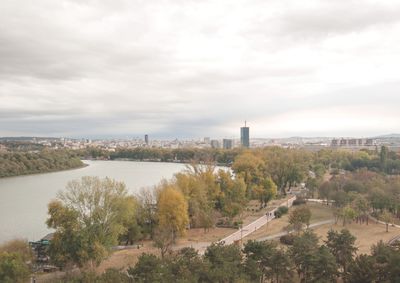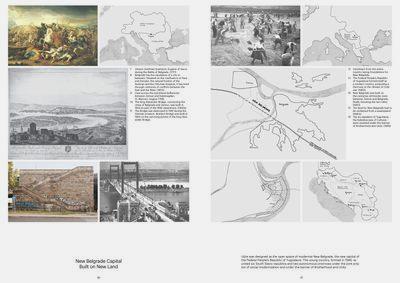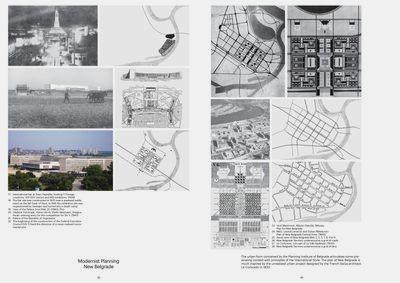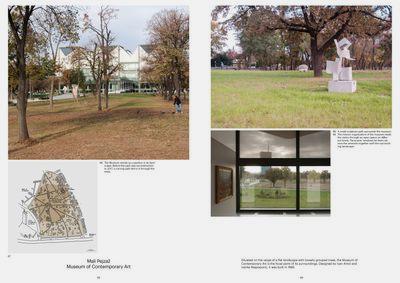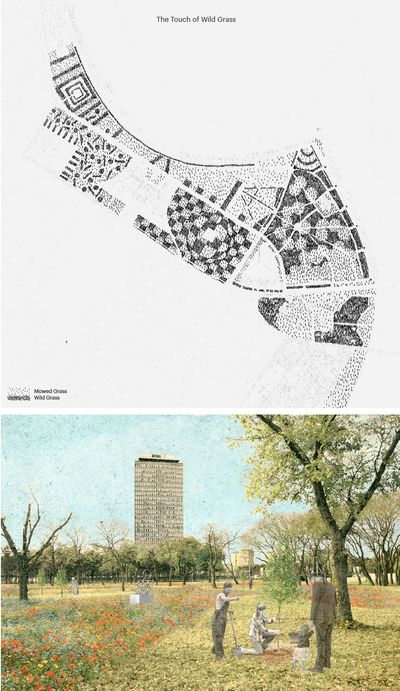Ušće Mali PejzažiUšće Park of Little Landscapes: Growing New FriendshipsRafael Schäfer and Klara Sladeckova

Along the left bank of the Sava, before the construction of New Belgrade in the middle of the 20th century, there was nothing but sparse settlements and fishers’ barracks. For centuries, this terrain was a no-mans-land along the border zone of the Ottoman and the Austrian and Austro-Hungarian empires. After the Kingdom of Yugoslavia was unified between the two World Wars, the Sava River was no longer a national border. This development enabled various planning strategies for the urbanisation of this marshland. In the 1930s, under King Alexander I, the Staro Sajmište fairgrounds were erected to house international expositions and promote the economy of the newly independent state. After WWII, when the Federal People’s Republic of Yugoslavia was formed under Josip Broz Tito, a modernist urban development was planned and implemented for this site. New Belgrade was to become the modern symbol of the young socialist state.

The Park of Friendship played a crucial representative role in the new socialist republic. As an expression of modernist architecture and urban planning— with structures such as the former residency of the government of Yugoslavia, the Museum of Contemporary Art, or towers in the green—the park unified political aspirations with an open landscape. New public rituals reinforced its monumental character, such as official state guests being invited to plant trees along the alleys. The transition to a capitalist system threatened the continuity of this green space, which initially extended into New Belgrade’s housing blocks. Parcelled up and sold for private development, many open spaces have been rebuilt with commercial facilities, sports halls, and car parks. The encroaching growth peaked with the Ušće shopping mall completion in 2009, transforming the public plaza in front of the former Communist Party headquarters into a commercial centre and the tower itself into a bank. Today, the adjacent Friendship Park is the most significant open space in New Belgrade.
As the memories of the site’s political past fade and its modernist features as a non-programmed, open space are contested, the project explores possibilities to re-imagine the Ušće landscape under the contemporary pressure for leisure, commerce, and development. Thanks to its heritage and position in Belgrade’s centre, Ušće Park has the potential to become a unique public area for Belgrade—currently dormant with only a few in-tense moments and poorly connected, vanishing from the citizens of Belgrade’s psycho-geography. The project reveals Ušće as a patchwork of interwoven miniature landscapes or mali pejzaži; each gathered around “architectural gems.” For now, this system is too loose and fails to generate an intelligible unity. The proposal Ušće Park of Little Landscapes: Growing New Friendships is an attempt to reclaim Ušće‘s role as a symbolic public space for the city. It brings one of Belgrade’s largest parks back to life, aiming to create a coherent space with changing characters of growing new friendships.
Ušće Park of Little Landscapes

Through three strategies, we will strengthen the fabric of Mali Pejzaži and seek to interweave the different characters and intensities into one space. The “united surface” strategy operates on the urban scale; it aims to signal the coherence of the entire Ušće. The “common threshold” acts on the Mali Pejzaži limits, bringing them together around a shared space. A series of “punctual interventions,” oriented toward public life, will concentrate activity around the interconnected nuclei of the Mali Pejzaži.
Additionally, the two projects “Touch of Wild Grass” and “Planting Trees with Friends”, focus on giving Ušće consistent yet locally specific textures of wild grasses and trees powered by citizens’ participation. Each year, competition amongst the citizens of Belgrade will provide a plan of wild grass pattern for the park, which the gardeners would then implement. “Planting Trees with Friends” will invite Belgraders to come and plant a tree of friendship, perpetuating the Non-Aligned Movement’s (NAM) ritual of goodwill. New trees will spread across Ušće, bringing together a community of guardians of Ušće. The landscape will symbolise shared values and a familiar democratic gesture. The long space for public gatherings proposes a T-shaped shared-use street, which could be entirely pedestrian on weekends and during summer.


